In early 2021, Ghost Lifestyle announced a major piece of their athletic puzzle: Ghost Hydration. The announcement came in their seventh season of their hit Building the Brand YouTube series.
Originally introduced in "Our First Greens Collab" (S7:E4), founder and CEO Dan Lourenco and his team covered several major items, including the announcement of a new Hydration supplement. At the time, we were told that the flavor had "Kiwi in the front, berry in the back" and would have Senactiv, part of Dan's pre-hockey stack back when it was known as ActiGin.
On March 9, 2022, it's finally live, celebrated a year later in S8:E20 titled "We're Hydrating the Globe". You can see the Ghost Hydration reveal at the 9:58 marker:
Hydrating the Globe with Ghost Hydration
Ghost Hydration goes big on potassium
With that masterfully unveiled, let's get right into the ingredients - but a major note is that Ghost Hydration goes bigger on potassium than most electrolyte supplements, and this is incredible to see.
Before we dig in, get signed up for Ghost Hydration alerts so you don't miss new flavors, deals, and the arrival of their stick packs:
GHOST Hydration – Deals and Price Drop Alerts
Get Price Alerts
No spam, no scams.
Disclosure: PricePlow relies on pricing from stores with which we have a business relationship. We work hard to keep pricing current, but you may find a better offer.
Posts are sponsored in part by the retailers and/or brands listed on this page.
This area is reserved for Team PricePlow's upcoming Ingredients video.
Subscribe to our channel and sign up for notifications so you catch it when it goes live!
Ghost Hydration Supplement Facts
First, let's start with the nutritional content in terms of recommended daily values, and then we'll get into where they come from as well as all of the other active ingredients:
-
Calories: 5
-
Total Carbohydrate: 2 g
-
Sugar: 0
-
Fiber: 1 g (in Kiwi Strawberry flavor)
-
-
Vitamin C (as PureWay-C) - 135 mg (150% DV)
-
Calcium - 60 mg (5% DV)
-
Magnesium - 83 mg (20% DV)
-
Chloride - 117 mg (5% DV)
-
Sodium - 150 mg (7% DV)
-
Potassium - 375 mg - (8% DV)
This puts an emphasis on potassium, with a spectacular 2.5:1 potassium:sodium ratio. This is incredible to see -- as we'll discuss below, it's difficult to get potassium in the Western Diet, but quite easy to get sodium.
Ghost Hydration Ingredients
In each 9 gram scoop of Ghost Hydration, you'll get the following fully-disclosed blend:
-
Taurine - 1500 mg
What better way to start a hydration supplement than with an osmolyte ingredient?! That's what we get from this above-clinical dose of taurine, which promotes increased water retention in cells and "osmotic swelling".[1] By doing this, taurine protects the mitochondria from stress, supporting better energy production that leads to numerous health effects all throughout the body.[2]
We see taurine used for multiple purposes in sports nutrition, ranging from increased cell volumization pumps (which is why it's in Ghost Pump) as well as increased endurance. Here, we'll focus on the latter.
A meta-analysis published in 2018 looked at ten different studies that used taurine and measured endurance. The researchers concluded that the osmolytic ingredient is useful to promote endurance anywhere from 1 to 6 grams when used daily -- and generally works on the first use![3]
Endurance is generally the major endpoint of taurine consumption, but the ingredient functions as an antioxidant by fighting oxidative stress through the optimization of calcium signaling, which supports muscular contraction.[3,4] It's also quite useful in improving the absorption of lipids through its mitochondrial benefits.[2]
Taurine also helps improve nitric oxide production a bit,[5] helping to improve blood flow. On top of this, taurine has a positive effect on concentration and cognition,[6] which is unsurprising given the importance of blood and water flow to the brain.
-
Potassium Citrate - 1036 mg
As called out in the introduction, this potassium is a keynote ingredient in Ghost Hydration. It's provided by potassium citrate, which we prefer in terms of taste to potassium chloride. Researchers consider potassium to be a "shortfall nutrient",[7] basically stating that most Americans can't get enough in through diet.
Most of the research surrounding potassium has to do with cardiovascular health,[7] based upon potassium-sodium interactions. Research has repeatedly shown that higher potassium:sodium intake ratios lower blood pressure and reduce the risk of heart disease better than solely focusing on just sodium alone.[8,9]
Although there isn't a ton of performance based research on potassium, many athletes in our community have anecdotally noticed improved energy levels and endurance when properly hydrated with a supplement that doesn't disregard potassium. Potassium can also help with bone mineral density thanks to improved calcium retention.[10,11]
The challenges of potassium, a shortfall nutrient
One of the reasons it's so difficult to get enough is because the suggested daily intake was set to 4700 milligrams per day in 2004,[12] but most Americans only get about half of that.[13] Potassium is heavily found in fruits and vegetables like potatoes, prunes, carrots, tomatoes, beans, yogurt, tuna, and bananas[13] -- but looking at these food sources, unless you're eating a large amount of tubers,[14] you're highly unlikely to get the recommended daily allowance without supplementing.
Interestingly, a study titled "Food pattern modeling shows that the 2010 Dietary Guidelines for sodium and potassium cannot be met simultaneously" showed that it's literally impossible to use the any of the US government's recommended diets and achieve both the high potassium and low sodium intake they expect.[15]
This paper's title is so spectacular that it deserves its own call-out.[15] So what gives? We simultaneously believe that sodium recommendations can go higher, but potassium does need to be supplemented in modern dieters as well.
Our response to such a study is three-fold:
-
After a certain minimum threshold of intake is achieved, the potassium to sodium ratio is more important than achieving high intake. We get into this below.
-
Today's sodium recommendations are too low, especially for active athletes reading this blog, and the ongoing fear mongering regarding blood pressure is more tightly related to sugar and carbohydrate intake than it is for sodium.[16]
-
Due to modern monocropped agriculture and high time preference overfarming practices, our foods have been stripped of their mineral content - especially potassium[17] - and supplementation is now necessary.
Potassium to sodium ratios - where our focus should be
It's all about the potassium sodium BALANCE. Too many electrolyte supplements are often sodium-only (or microdose the potassium), but not here.
When it comes to cardiovascular health, the sodium-potassium interaction is a vastly underappreciated mechanism, especially in terms of hypertension (high blood pressure).[18] Despite constant focus on sodium, numerous studies show that sodium-potassium ratio is best associated with increased blood pressure and cardiovascular disease.[19-23]
Historically, humans ingested far more potassium than sodium, but that's recently shifted in the opposite direction with the surge of modern processed food.[7,24] Despite what's known about the potassium:sodium interaction and ratios, it's still a major challenge to fix this, and most will fail.[15,25]
One study starts its introduction quite bluntly, simply stating that "Adult Americans consume too much sodium and not enough potassium."[25]
The mechanism: potassium leads to vasodilation
In the flowchart below, you can see the biologic interaction of sodium and potassium and how the modern western diet negatively affects our health:[18]
A flow chart of how the modern western diet negatively affects sodium/potassium interaction, leading to poor health consequences.[18]
Mechanistically, potassium helps to hyperpolarize endothelial cells, enabling for more vasodilation through the stimulation of the sodium pump and opening potassium channels.[18,26,27] With adequate potassium, this allows for intracellular calcium to drop, which leads to vasodilation -- thus lowering blood pressure. Looking at this research, we posit that there should be more potassium in nitric oxide boosting pump supplements.
The point isn't to fear sodium - it's to embrace potassium.
And thankfully, Ghost put more potassium than sodium into Ghost Hydration, helping to skew the fight back in your favor. It's not that sodium is bad -- it's just that we want more potassium than sodium, and sodium is the mineral that's far easier to get in modern society. This is why all hydration supplements worth their salt should really zoom in on potassium.
Finally, you'll notice that all of the added minerals in Ghost Hydration -- potassium, magnesium, and sodium -- are bound to citrate rather than chloride. This is going to help in terms of taste as well as keep chloride a bit lower (we'll still have some from the Himalayan Pink Salt).
-
-
Magnesium Citrate - 565 mg
As pointed out in the potassium section, modern agriculture has strip-mined our mineral content,[17] and that's especially true when it comes to magnesium.[28-33] Simply put, Western foods don't have enough anymore -- even if you're not eating ultra-processed food -- and we need to supplement more of the critical electrolyte. Without supplementations, the vast majority of dieters are deficient.
Magnesium is both an electrolyte used for fluid balance and energy transfer, but is also used as a cofactor in many enzymatic reactions. Many of those reactions involve ATP and glycolysis, making the mineral extremely important for energy production,[34] as shown by the research cited below.
Like potassium, magnesium helps lower blood pressure,[35-38] but is also metabolically important. When giving magnesium back to dieters who are deficient, improvements in both blood sugar levels and insulin sensitivity are found.[35,39,40] This enables better utilization of carbohydrates, which is especially important for those Ghost "physique destroyers".
The average amount of calcium, magnesium, and iron in vegetables like spinach, lettuce, cabbage, and tomatoes has plummeted as much as 80–90% since 1914.[28] Sadly we have to supplement them back in.
Athletically, there's a study where magnesium supplementation was shown to improve aerobic exercise capacity and muscle oxygenation in triathlon sport training.[41]
Magnesium oxide (the cheapest and least reliable form of magnesium) has been shown to increase female bone mineral density,[42] and with the more bioavailable magnesium citrate, we expect to see even better effects.
Magnesium is frequently used before bed to improve sleep[43,44] and reduce anxiety -- the 20% DV provided by Ghost Hydration for athletics is a great start, but the honest truth is that some dieters may need even more before bed. The amount here in Ghost Hydration should be enough to improve fluid balance, but isn't so much that it'll send anyone to the bathroom or cause GI effects.
-
Aquamin (trace minerals derived from Red Marine Algae) - 500 mg
Ghost Hydration also has some natural sources of minerals, which are important to get a broad spectrum of elements that go beyond potassium/magnesium/sodium. While this supplement doesn't have a specific calcium-named ingredient, it still provides 5% of the recommended daily value of the mineral, and Aquamin -- sourced from red marine algae -- is the reason why.
Thanks to the potassium, Ghost Hydration will stack very well with Ghost Pump
Aquamin is a great source of calcium, followed by magnesium.[45] It also has trace minerals like boron and manganese, which have been shown to improve joint health.[46]
Researchers have performed a couple of studies on aquamin, showing that it helps with both bone and joint health.[45,47] The trace minerals alongside may help prevent minor deficiencies, and by using naturally-sourced ingredients like this and Himalayan pink salt, Ghost can get a larger spectrum of elements in Ghost Hydration without adding dozens of extra ingredients.
But in general, Aquamin is our primary source of calcium.
-
Sodium Citrate - 323 mg
Providing 7% of recommended daily value of sodium is sodium citrate, yielding 150 milligrams of sodium. We've already discussed sodium in the context of potassium, but sodium has many of its own effects. As many know, this hydrating electrolyte helps the body maintain proper intracellular and extracellular fluid balance.[48] It's needed for muscle contraction as well as nerve signal transmission, making it extraordinarily important for athletes.
These graphs show Sodium (A) and potassium (B) net balances 2 h after ingestion of 1 L of various commonly consumed and commercially available drinks.
When athletes sweat during hard training, but only replace their fluids with water, their sodium levels begin to deplete, and this often leads to worsened performance, muscle cramping, and in extreme cases, hyponatremia.[49] We don't want any of this, so it's important to at least replace what may be lost.
In general, humans need to replace about 2 grams of sodium per day, which is why many organizations recommend 2.3 grams per day (basically a teaspoon of table salt).[50] However, most of us reading this website are not normal humans - we train hard and sweat a lot. This means that the standard American Diet, which gets roughly double the recommended sodium per day,[51] is more in line with what athletes need.
Athletes who are training for more than two hours, however, should definitely consider more sodium, doubling the amount of Ghost Hydration. Hard-training athletes who are at risk of heavy sodium loss (3-4 grams) are at greater risk for dehydration-based consequences.[52]
Sodium citrate?
Again, Ghost has gone with the citrate form of sodium, which is unique since most companies use sodium chloride (table salt). Looking into this specific form, there's a study that showed that high-dose sodium citrate improved 3000 meter running performance in elite athletes, with significantly faster performance compared to placebo.[53]
Ultimately, we agree with the Ghost conclusion -- sodium is great to have, especially if sweating a lot, but there's a good chance you have plenty in your diet.
-
PureWay-C (Ascorbic Acid and Citrus Bioflavonoids) - 195 mg
Stepping into the antioxidant realm, Ghost Hydration includes 135 milligrams of vitamin C (150% DV). Most know Vitamin C for its antioxidant effects, as it can help prevent oxidative stress caused by free radicals.[54,55]
In supplements, we see the ingredient used for numerous purposes, ranging from its immune-boosting properties to promoting nitric oxide production[56] and avoiding deficiencies that limit athletic performance.[57] Through its ability to reduce oxidation, vitamin C has been shown to reduce markers of muscle damage and soreness after exercise.[58,59]
Research has also shown that dieters on a calorie-reduced diet get some anti-fatiguing benefits from vitamin C supplementation as well.[60] Worth noting that it's added to Ghost Pump because it prevents tolerance build-up to the nitrates inside,[61] but that's less relevant here unless you stack with Pump (which isn't a bad idea, given the added vasodilation from the potassium here in Hydration).
But even more interesting is the type of vitamin C that Ghost chose:
PureWay-C: greater bioavailability, more vitamin c retention
PureWay-C is a source of vitamin C that claims to have 233% better retention. There have been at least four research studies published demonstrating its efficacy, leading us to believe those claims.[62-65] This is also why the updated Ghost Multi re-launched in 2022 just prior to Ghost Hydration's launch also used this form of vitamin C.
In 2008, when researchers published a study pitting PureWay-C against three competing forms of vitamin C (ascorbic acid, Ester-C [ascorbate-calcium threonate-dehydroascorbate], and calcium ascorbate), they concluded the following (emphasis ours):
PureWay-C supplementation leads to the highest absolute serum vitamin C levels when compared to AA, CaA and Ester-C. PureWay-C provides a statistically significant greater serum level than calcium ascorbate at 1, 2, 4, and 6 hours post oral supplementation[62]
Hydrating your skin?
In terms of actual Hydration, vitamin C doesn't seem to have many direct effects on whole body water balance, but studies have shown that vitamin C containing supplements may in fact help with skin hydration.[66] If you're interested in that route, take a look at Ghost Lifestyle's skin care supplement, Ghost Glow.
-
Himalayan Pink Sea Salt - 192 mg
Alongside Aquamin, Ghost also adds some Himalayan Pink Salt, which will mostly provide sodium chloride (salt), but also adds some trace minerals to the mix. We've covered the sodium benefits above.
What we love here is that the combination of sodium citrate alongside Himalayan salt here, we have a reasonable amount of chloride - 5% DV. Had Ghost used potassium chloride, sodium chloride, and pink salt, we'd have seen chloride be out of balance. This is some smart formulation - and it's likely going to taste great too.
-
Senactiv (Panax Notoginseng (root) and Rosa canina ((fruit)) extracts - 50 mg
As mentioned in the introduction, Ghost Hydration completes the Senactiv trifecta, since both Ghost Legend and Ghost Size have it. This unique recovery-assisting ingredient from NuLiv Science uses extracts from panax notoginseng and rosa canina, and is known as a senolytic. This means that it helps facilitate cell clearance, where the body removes old, dying cells and replaces them with healthy, new cells.
Your leg day just got better! A new study using the ginseng portion of Senactiv showed lower perceived exertion in heavy squats and reduced inflammatory markers a day later![67]
NuLiv Science backs Senactiv via four human clinical trials and two in-vivo investigations.[67-72] In one human study, subjects took Senactiv's ginseng extract or a placebo one hour before exercise. The researchers conducted muscle biopsies prior to, immediately after, and three hours after a 60-minute cycle exercise. The muscle tissue of subjects exposed to the ginseng appeared to have enhanced glycogen replenishment and fewer markers of inflammation when compared to the placebo group.[68]
The take-home message is that ginseng present in Senactiv helps reduce the proinflammatory state that exercise causes. Besides this anti-inflammatory benefit, the ginseng also appears to have improved VO2 max by 20% versus the control group![68] While it's important to note that overall aerobic capacity did not improve, we will take a VO2 max boost any time.
You can read more about Senactiv in our article titled Senactiv from NuLiv Science: Regenerate Senescent Cells and Perform Better.
Hard-training carb-lovers rejoice: The ginseng in Senactiv gets glycogen restored better and faster,[68] so you can reload and get after it sooner.
From what we've seen, Senactiv performs excellently in any sports-minded supplement, as there is a strong "endurance type effect" that we're still putting our fingers on. Dan Lourenco, founder of Ghost, has always been a major user of this ingredient, dating back to when it was named ActiGin and he'd use NuLiv Science's sample bottles before hockey matches.
Now, between Hydration, Legend, and Size, there's no need for Dan to sneak samples from NuLiv Science - he's got his Senactiv stack rounded out!
Sweat is highly variable
In terms of formulating the "perfect" hydration supplement, one last thing to note is the high variability of sweat that's excreted from athletes. Hydration formulas are hard to formulate because things like workout intensity, conditions, duration, and one's genetics impact fluid and electrolyte needs. The ranges of minerals excreted are very broad, as seen in the tables shown in a 2016 study by Lara, et al.[73]
At a single serving, Ghost Hydration is meant for fitness enthusiasts hitting it hard for 45-60 minutes. Multiple servings are likely needed for longer, more intense, or heat-based training sessions. Experience is key - don't be afraid to dial it up or down to see how you feel and perform differently.
Natural flavor. Natural color. Natural sweetener!
Finally, it's worth noting that Ghost Hydration is both naturally colored, naturally flavored, and naturally sweetened, so there's no red #40 or sucralose, for instance.
Given that other brands have given up on flavoring high-dosed potassium with sucralose and artificial flavors, and Ghost did it without any of the above, which is extra impressive.
Flavors available
On the note of flavors, here's what's out there:
Additional Coverage on Ghost Hydration
We've covered Senactiv in several articles, and love the way it feels. You can see Dan and Ryan first discuss Ghost Hydration around the 5:50 mark below (it's also mentioned at 9:50 in S7:E5):
Ghost Hydration: Well Worth the Wait
This one was definitely a long time in the making, and now we can see why. Ghost didn't make life easy on themselves:
- More potassium than sodium
- Natural flavoring
- Natural sweetening
- Added botanicals
But after a long amount of work, they did it - and the reasons above, alongside Senactiv, lead us to believe that it's a superior hydration supplement both in and out of the sports nutrition sector. Ghost Hydration can reach a large audience, and making it both natural and vegan-friendly helps with that as well.
We've been waiting for this one for quite a while, and can say it's been worth the wait. Hydration supplements may seem simple until you realize that there's a lot more than just throwing salt and flavoring in a tub if you want to do it right.
We expect Ghost Hydration to bring a lot more Legends into the brand's tribe, given that this one can reach markets that pre-workouts, pump supplements, and energy drinks won't. Not that we don't love those, but if you're not hydrating properly, you're not getting the most out of anything athletic.
GHOST Hydration – Deals and Price Drop Alerts
Get Price Alerts
No spam, no scams.
Disclosure: PricePlow relies on pricing from stores with which we have a business relationship. We work hard to keep pricing current, but you may find a better offer.
Posts are sponsored in part by the retailers and/or brands listed on this page.
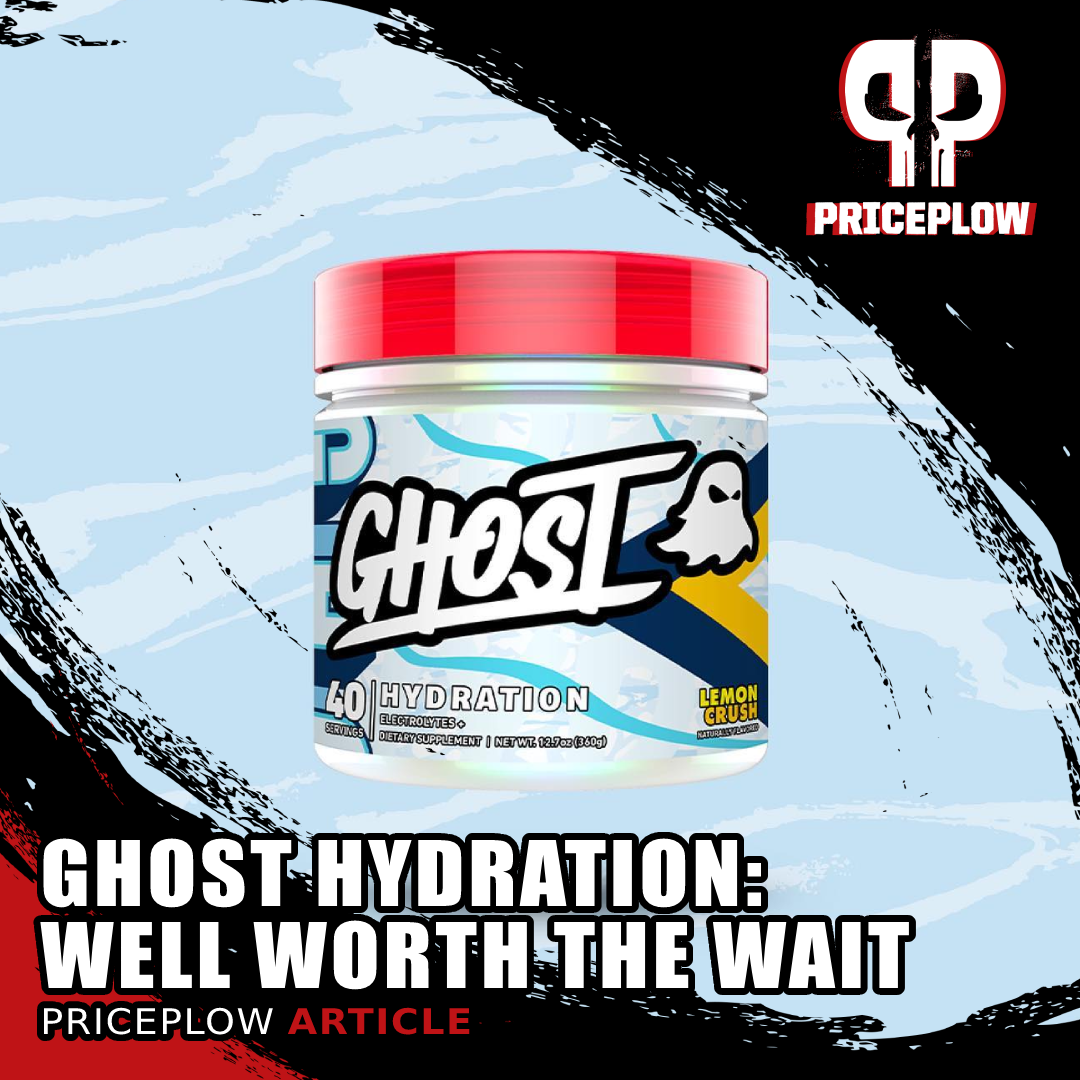
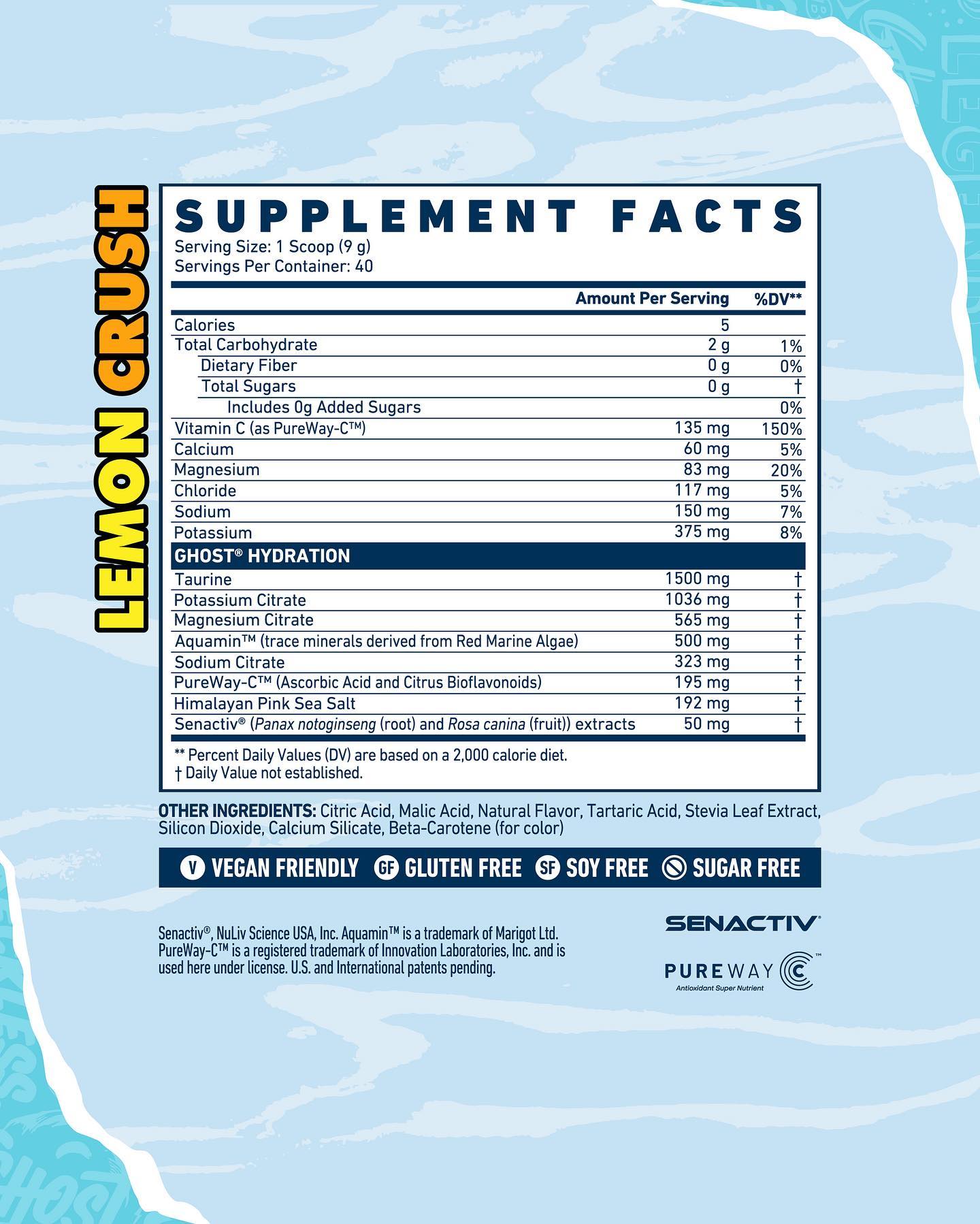

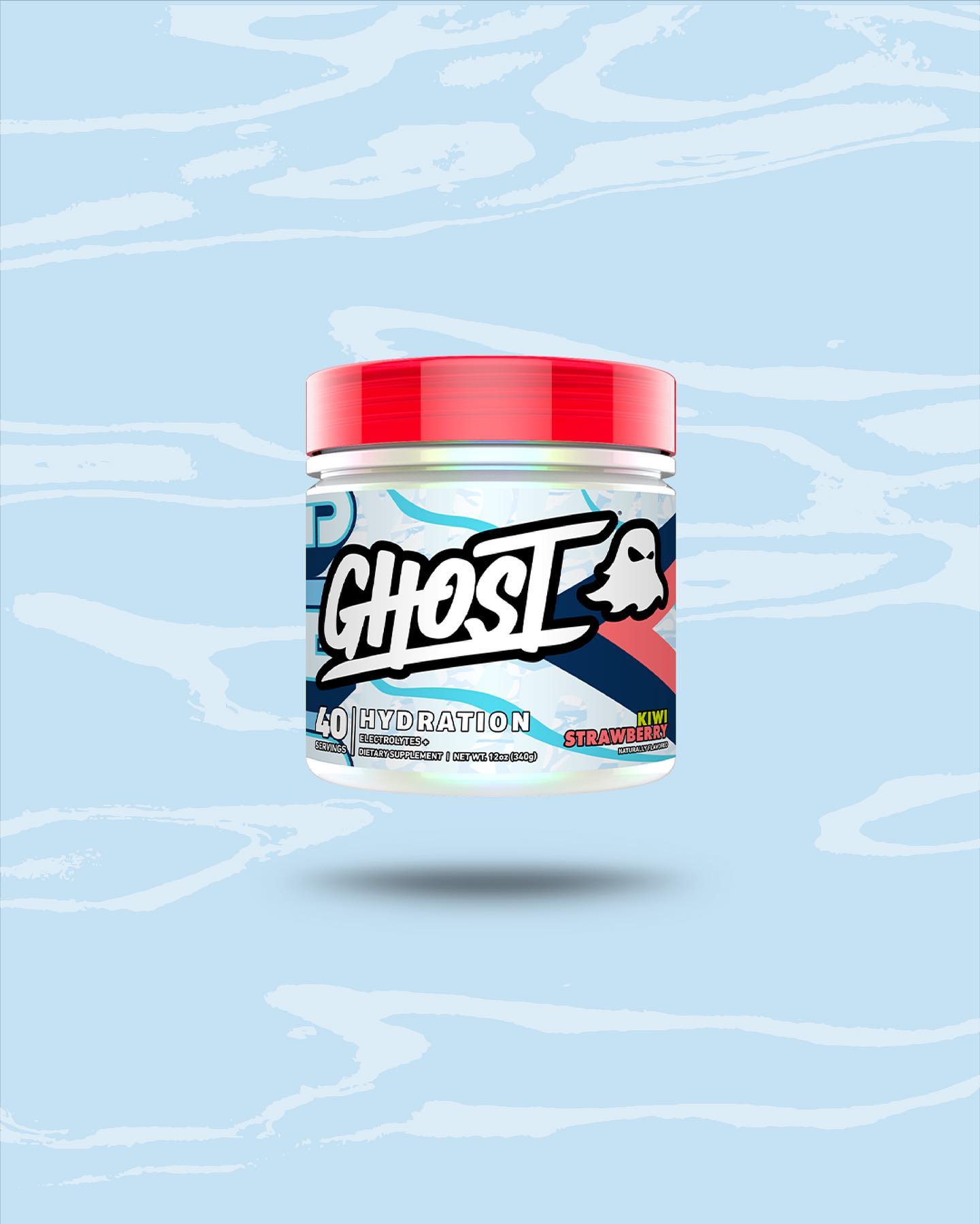


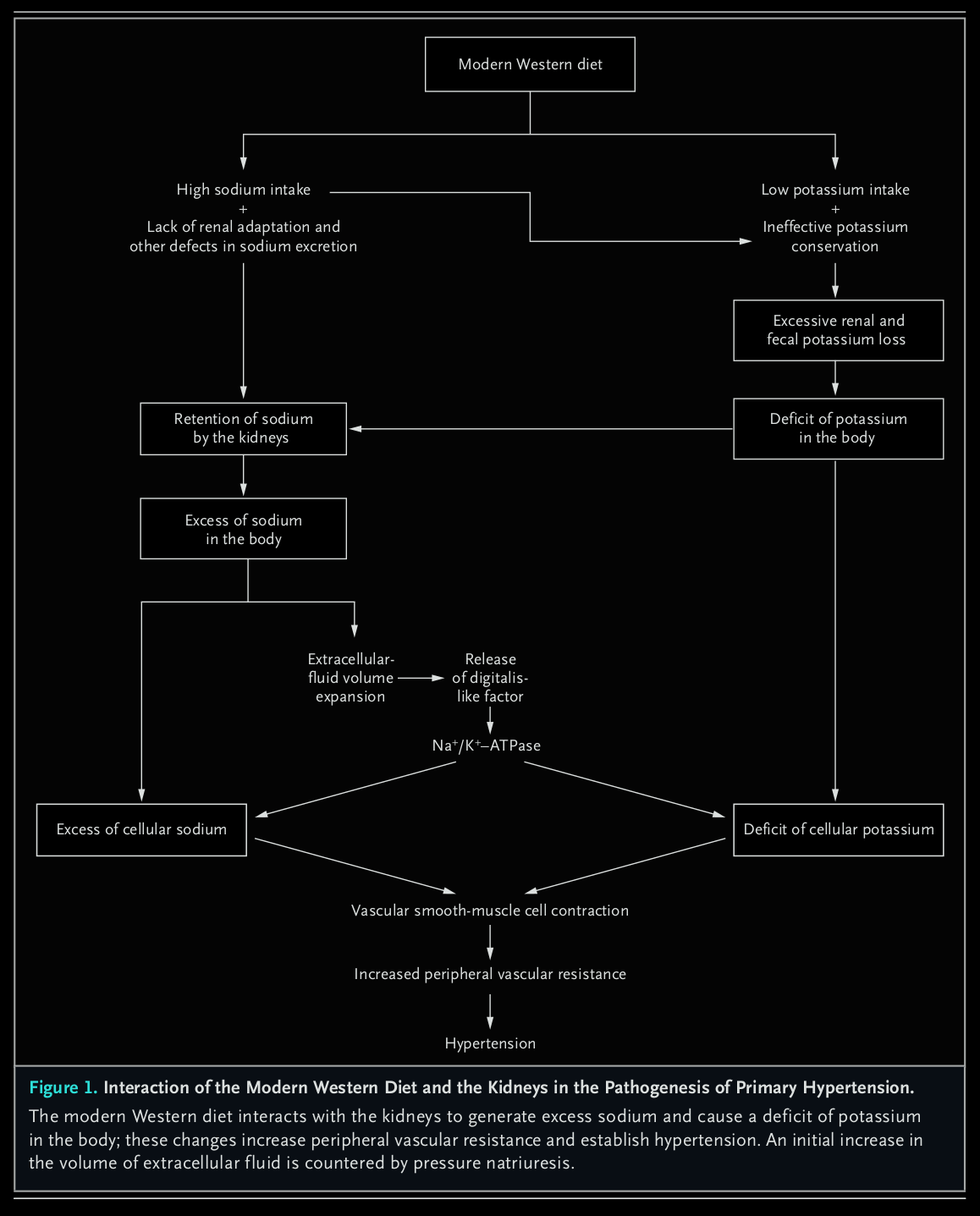
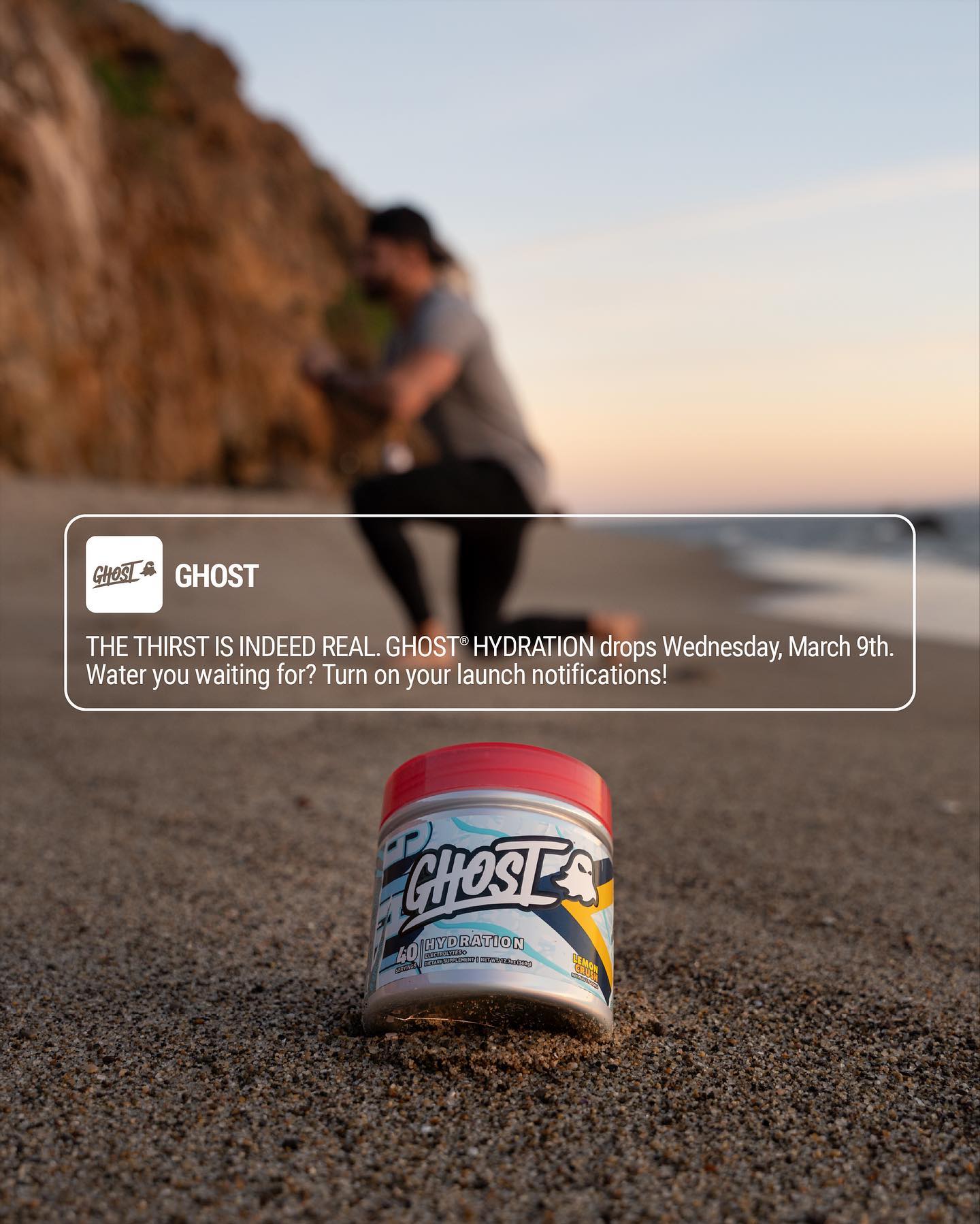
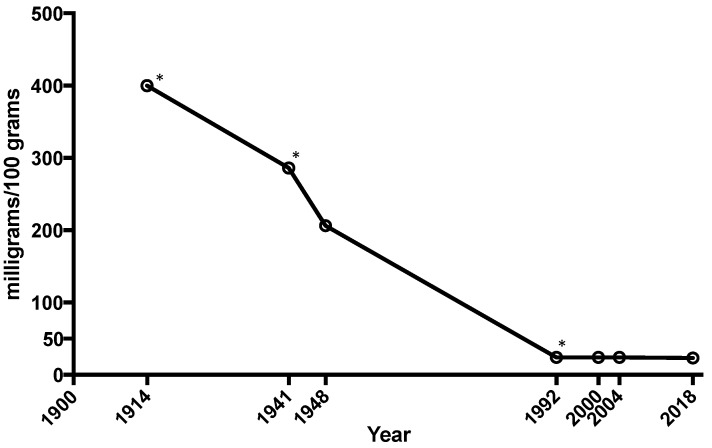
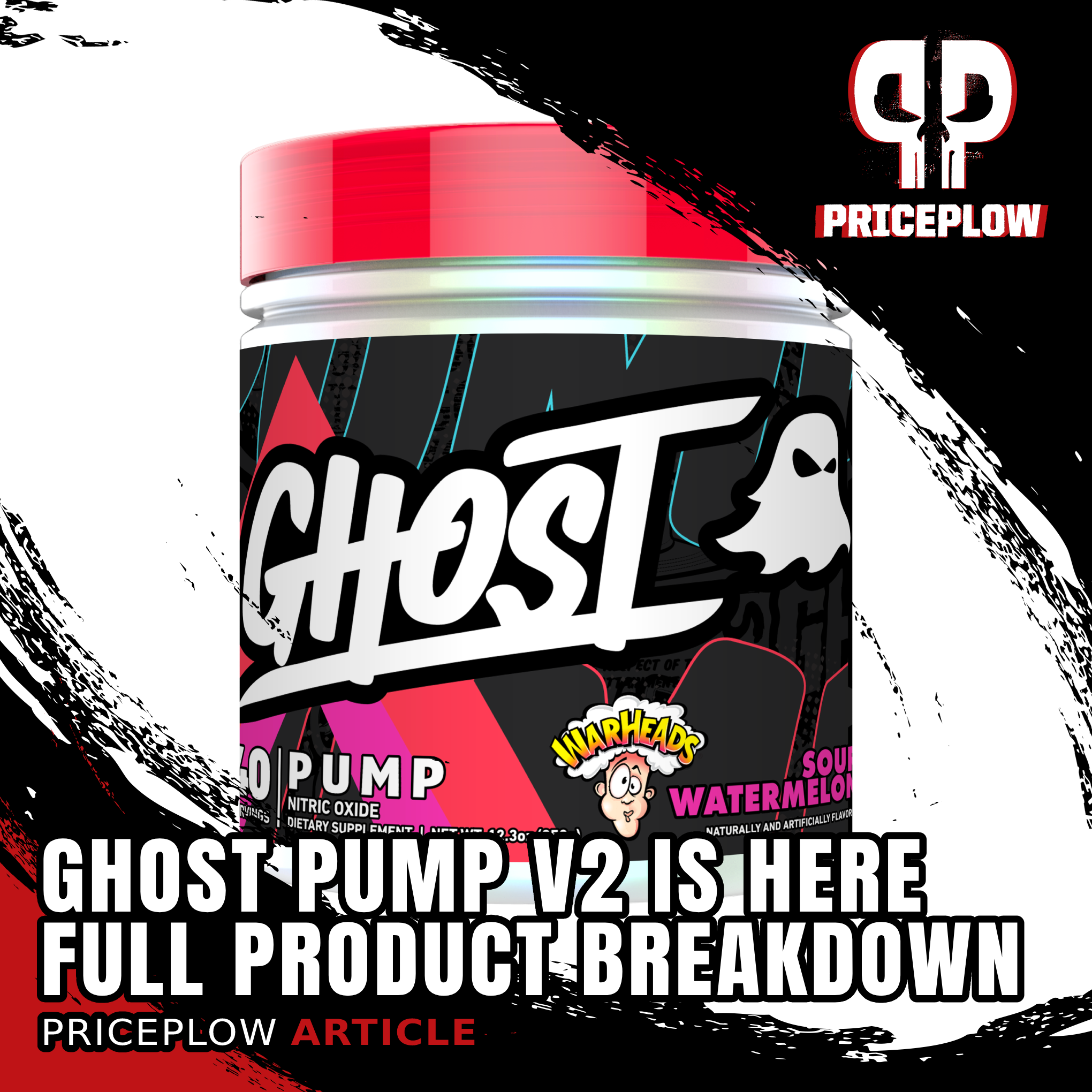

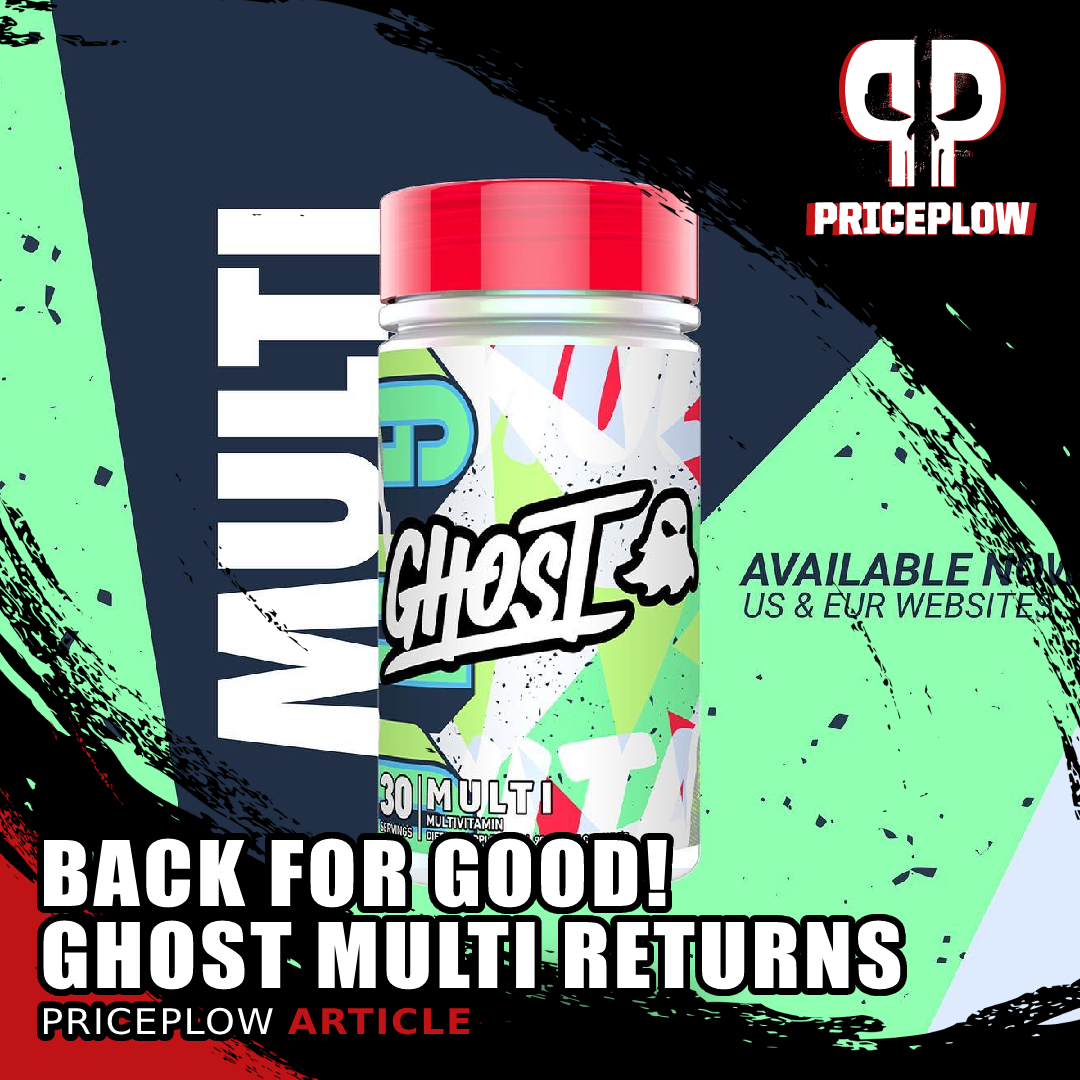
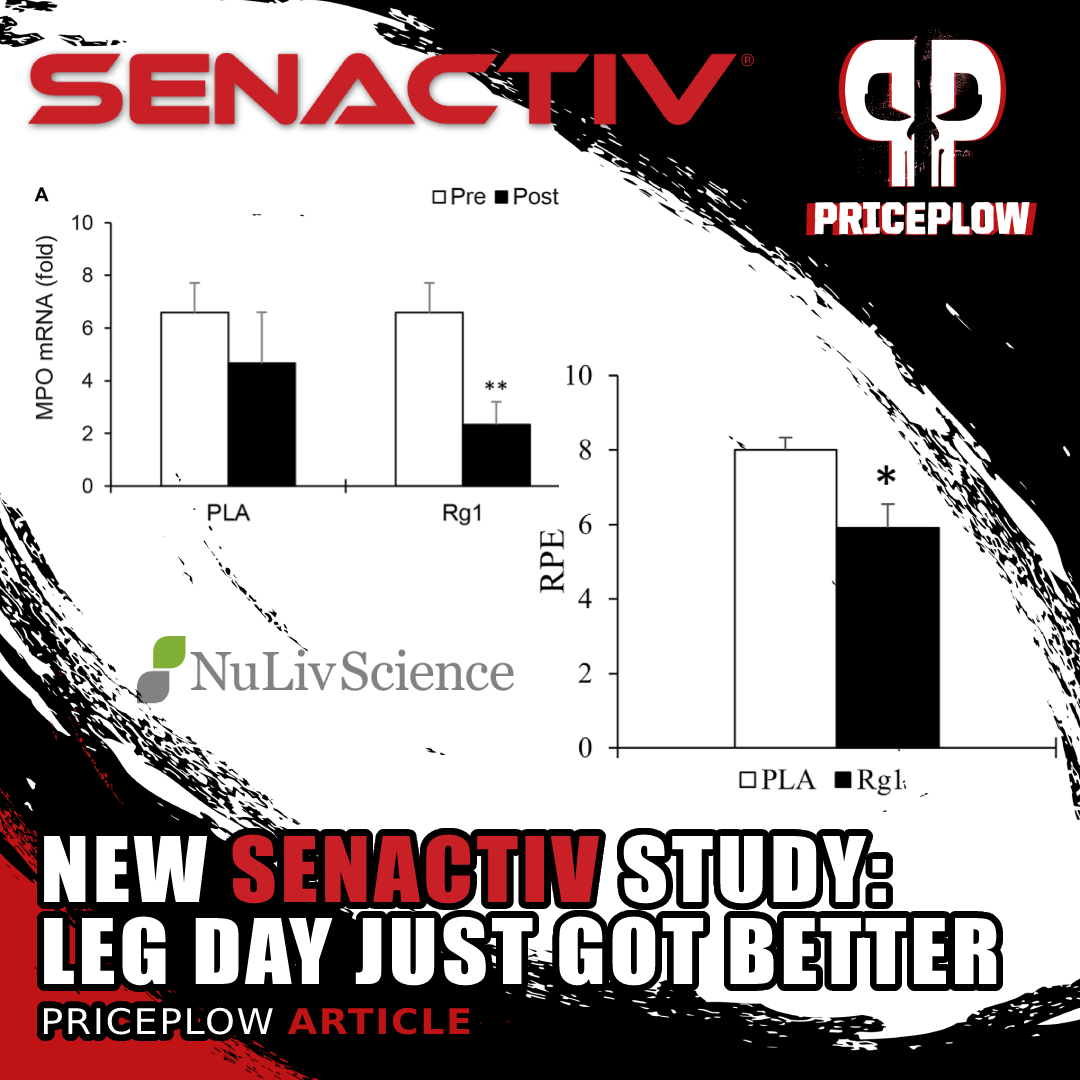

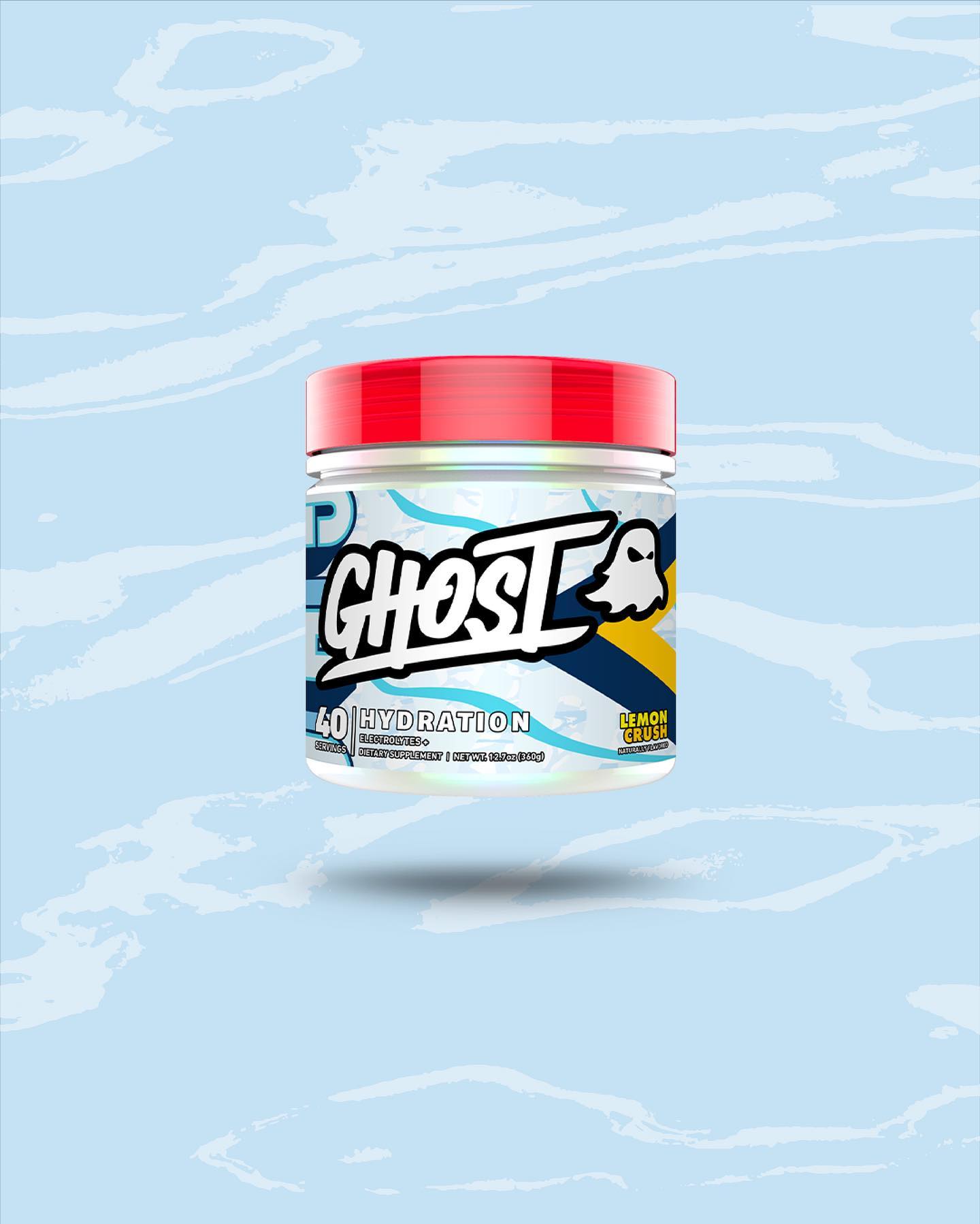
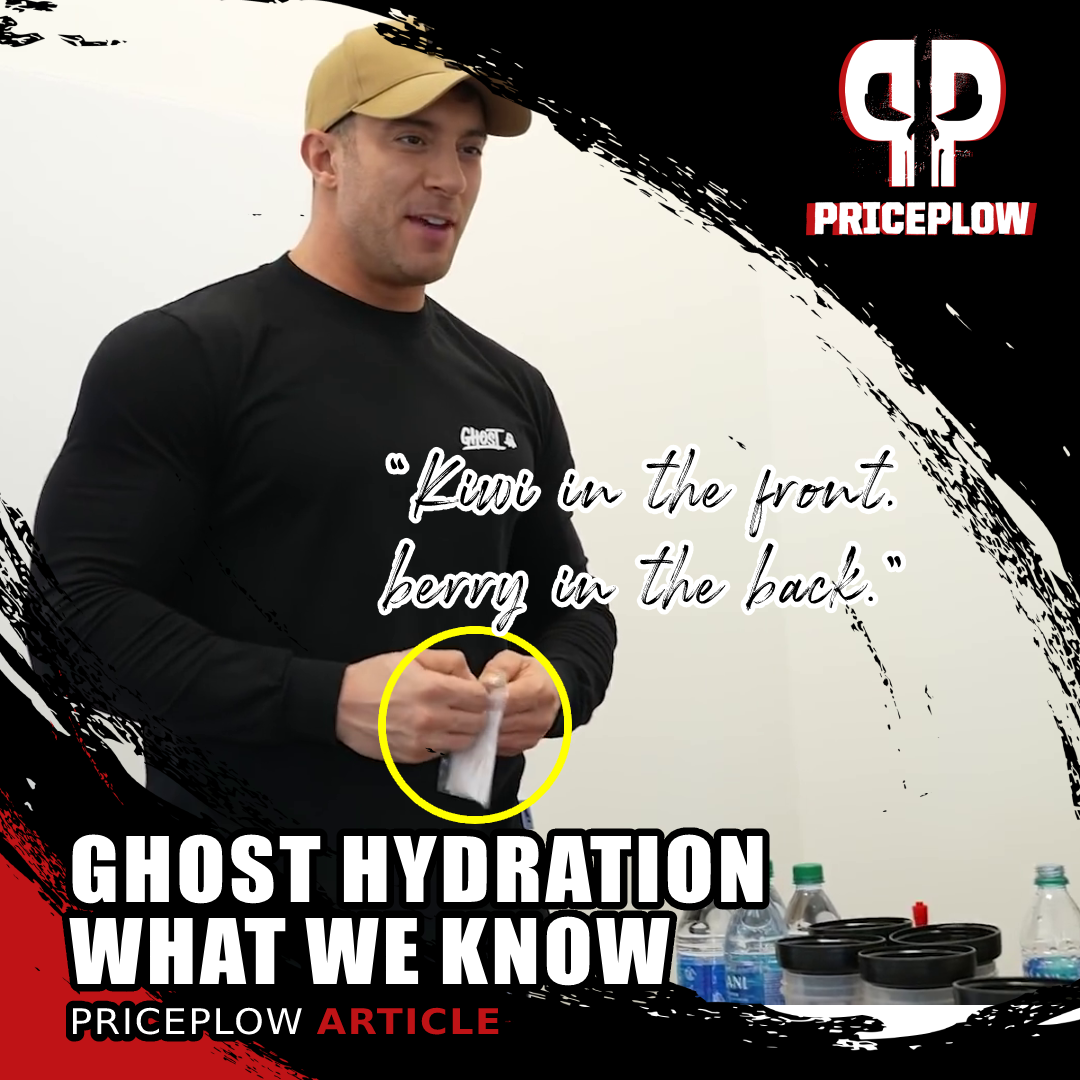


Comments and Discussion (Powered by the PricePlow Forum)